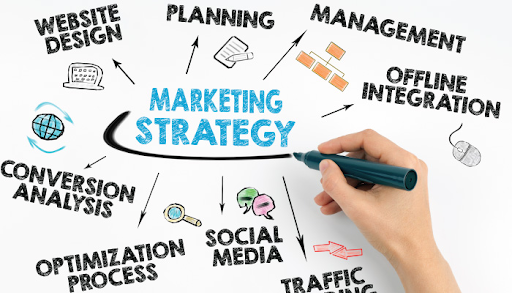Marketing personalization is a unique strategy created to assist companies in connecting with their customers. It delivers highly relevant information based on real-time data and insights. Personalization is about transforming marketing from assumption-based, batch-and-blast techniques to meaningful, tailored customer interactions.
It is the process through which brands modify their services and advertising according to the needs of their customers. Personalization, or the capacity to tailor communications to specific customers, has become a key marketing trend in recent years. In fact, many brands have lost up to 38% of their customers due to a lack of proper marketing personalized efforts.
This only shows the importance of having a quality marketing personalization strategy. This is due, in part, to the fact that it allows brands to give what customers exactly want while also increasing client loyalty. However, personalization has progressed beyond simply addressing clients by their first names.
The following tips will help you make an informed decision before you create the best-personalized marketing strategies for your customers.
Invest in quality technology
With so many possibilities, including generalized all-in-one products and customized tools for specific uses, the marketing technology landscape can be challenging to cover. Some technologies are required to implement a personalized marketing strategy, such as dynamic creative optimization (DCO), which enables organizations to scale online personalization efforts. DCO assists brands in addressing increasing customer demands by providing customized ad experiences at scale.
DCO is a form of display ad technology that generates real-time campaigns targeted to the individual based on a combination of historical insights and data at the time the ad is presented. DCO presents real-time, specific information to determine what to show. Consumers are prone to view ads that they consider relevant, which means they are more likely to click and convert. A personalized message nowadays extends beyond simply using someone’s first name in an email. So, businesses must employ the appropriate technologies to convey relevant messages to users.

Image source: Talk CMO
Set clear business goals
Companies must create a list of specific goals with broader business objectives in order to determine the success of personalized marketing activities. They must identify the difficulties and possibilities that exist, as well as how to solve them through personalization initiatives. This could appear as higher income, increased brand exposure, engagement, or repeat purchases. Goals differ among industries, enterprises, and audiences, but once general objectives are established, they may be linked to KPIs and used to monitor progress.
For instance, you can use common company goals to drive personalization methods, such as increasing new client acquisition by 20%, shortening the sales cycle by one month, lowering customer churn by 10%, and lowering cart abandonment rates by 15%. These goals should be measurable for reporting purposes, but they should also dictate which initiatives and techniques the organization should implement to attain these goals.
Implement contextual advertising
Contextual advertising is a cookie-free targeting strategy that uses content instead of user data to reach the right audience at the right time. You can interact with people who respond to your ads messaging based on the content they see. Contextual advertising takes a different approach to targeting than behavioral targeting.
Behavioral targeting identifies ideal customers based on their characteristics, whereas contextual advertising targets users based on their location and the content they are currently consuming. Ads that consist of relevant content provide a better experience for your viewers. For example, you can offer a visitor searching a site about coffee types an ad for a coffee maker using contextual targeting.
Image source: HubSpot Blog
Remain attentive
Personalized marketing initiatives necessitate ongoing monitoring and optimization based on data collected by marketers and projected outcomes against company goals. When marketers do not employ AI, they set the conditions for which prospects and consumers receive tailored marketing. These customized campaigns can remain current by revisiting or adding to those rules.
Marketers will include fresh content and offer in their messaging, as well as new technologies to assist their efforts. They should also review analytics regularly. The effectiveness of tailored marketing approaches will reveal what works and what does not. With that information, marketing teams may make changes to their campaigns to ensure they accomplish the main goals.
Final thoughts
Personalization is all about knowing your current audiences’ preferences and interests. A successful implementation begins with a simple step, but the outcomes have an exponential impact and continue to accelerate when marketing, sales, and customer support are involved.
Personalizing your marketing campaigns will assist you in providing a great experience to your potential consumers and attracting their interest, and driving them down the marketing funnel. As you build new tactics to customize your business, you will discover fresh and exciting ways to provide many great experiences to your loyal consumers.
Interesting Related Article: “6 Best AI Writing Tools To Ease Your Content Marketing“
